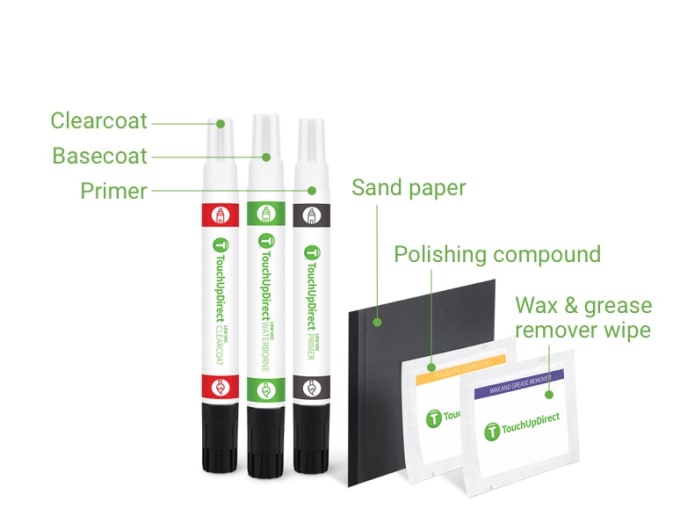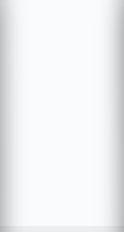
Lamborghini Touch Up Paint
The Automobili Ferruccio Lamborghini S.p.A. saw the light of day on October 30th, 1963 in Sant'Agata, Bolognese. First, let's go back in time a little more to retrace the steps leading up to the foundation of this famous luxury car brand. Born in 1916, the Italian Ferruccio Lamborghini initially gained recognition during World War II where he was stationed on the island of Rhodes. Somewhat away from the heat of the war, Ferruccio's main job consisted of fixing broken engines, which he did effortlessly.
After the war was over, the mechanic returned to Italy where he decided to put his skills at use and open a small motorcycle repair shop. Once again, his talent was not ignored and the young entrepreneur gained quite a lot of business. Soon after, following the country's need of farming implements, he expanded his shop with a tractor production facility by using scrap metal and waste from the war. His expanding company did not stop there, quickly expanding with a heating and conditioning business in the early 1960's.
It's around this time, 1963 to be exact, that Ferruccio Lamborghini stepped into the car venture. With the avowed aim to compete against Italy's finest sport car maker of the time, including Ferrari and Maserati, the Automobili Ferruccio Lamborghini S.p.A. was born. Even if Ferruccio was very wealthy and far from a novice in car engineering and mechanics, many thought that his enterprise would never be able to rival Ferrari's. The first Lamborghini, the 350GTV, was presented at the 1963 Turin Motor Show and, according to the legend no engine was placed under the hood. This situation was caused by a conflict with the owner and its chief engineer at the time, Giotto Bizzarrini. Despite the success of the car during the Turin show, the constructor decided to work more on the car developing the 350GT as the first car to enter production.
The following years saw the development of more models; the 400GT, a more powerful 350GT, the 400GT 2+2, a longer version of the car and the 1967 Miura. The latter became the standard for mid-engine, two-seat, high-performance sports cars. Undeterred by the pressure of some of its engineers, Ferruccio was dead set on producing the best sports car possible, not prototypes and "technical bombs" and refused to participate in racing. As the years passed, Lamborghini kept making new models and the brand's popularity kept growing.
Unfortunately for the businessman, the early 1970's brought along a world financial crisis which in turn affected Ferruccio's tractor and car enterprise finances very badly. Even after selling its tractor company, the Lamborghini group was still in trouble and Ferruccio was forced to sell 51% of his shares to Swiss Businessman Georges-Henri Rossetti. A mere two years later, in 1974, Lamborghini still afflicted by the Oil Crisis forced Ferruccio to sell his remaining share in the company to Rene Leimer and prompted the man to retire. Eventually, in 1978, the company was compelled to declare bankruptcy and placed under control of the Italian government.
In 1981, the company was auctioned and bought by Swiss food moguls Mimran brothers. After injecting heaps of capital into the brand that allowed the launch of a couple of new models, had a somewhat successful result. However, these investments proved insufficient to revive the company. After this realization, the brothers set out to find a solid financial partner and turned to the American Chrysler Corporation.
Chrysler's interest in Lamborghini was to pierce the "extra premium" car market without having to start from the ground up. They estimated the market for this segment to be about 5,000 cars per year on a worldwide scale. The company's ultimate goal was to create a car that could compete against Ferrari's 328 before the end of 1991 and also having the Italian engineers develop an engine for Chrysler's American cars. While Chrysler's involvement in the company allowed Lamborghini to establish a network of dealerships previously nonexistent in America, the cooperation between the two car makers did not go smoothly. Despite having some success in 1990 with the release of the Diablo model, sales quickly fizzled in the following years and forced Chrysler to rethink its involvement in the company.
From 1994 to 1997 Lamborghini was owned by an Indonesian conglomerate where history seemed to repeat itself once again. A restructuration of the company along with the launch of new models and constant improvement made to the Diablo proved fruitful for the company but alas, this was not enough for the brand to return to profitability. Unfortunately for the new owners, the year that Lamborghini sold enough Diablo to return to profitability, Asia entered its very own financial crisis forcing the Indonesian to relinquish their interests in the business.
This time around, the buyers were Germans and the company was Volkswagen. Lamborghini was placed under the Audi branch of the conglomerate with the goal to bolster Audi's sporty image and allow Lamborghini to profit from the German technological advances. Among the Lamborghini models made under the new German takeover came the Murcielago and the Gallardo. Lamborghini achieved its peak sale numbers in 2008, just before the new world financial crisis which in turn, decreased the sales by 50% for the few following years.
To this day, the Lamborghini Gallardo is the largest produced model accounting for at least half of all Lamborghini productions, even after the model being discontinued in 2013. Under Audi's supervision, the company now seems to be thriving once again as it continues to launch new models, but if you are the proud owner of a vintage Lambo, TouchUpDirect has everything in store to keep it at the top of its line.
What tools do I need for a Lamborghini touch up paint job?

To create the best looking coat for your vehicle, we recommend the following:
PRIMER, COLOR, AND CLEARCOAT - It goes without saying that you need paint to do a touch up paint job. Clearcoat provides a thin protective layer for your paint job while Primer is required for damage that has reached the original base material.
WAX AND GREASE REMOVER CLOTH - The wax and grease remover cloth is used to remove wax, grease, and contaminants before painting.
SANDPAPER - Wet-sanding the affected area removes rust and prepares the surface with a rough finish so the paint can stick better.
POLISHING COMPOUND - The polishing compound smooths everything out with a factory-grade finish.
These tools are all available with our Platinum kit but can be purchased separately on the TouchUpDirect website.
How to Apply Lamborghini Touch Up Paint
Looking for help with painting your Lamborghini? We have an entire library of instructions and how-to videos designed to walk you through the process.
How to Find Your Lamborghini Color Code
What is Lamborghini Color Code?
To find the Lamborghini color code, check the following:- Firewall
Lamborghini color codes are typically a series of letters, numbers, or both.

















